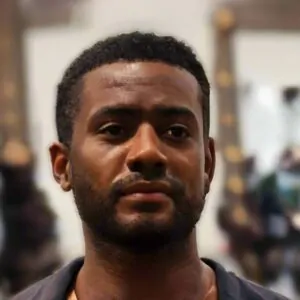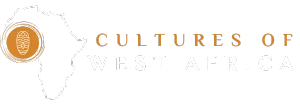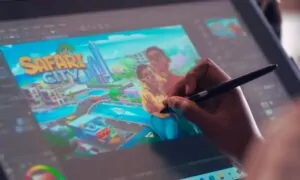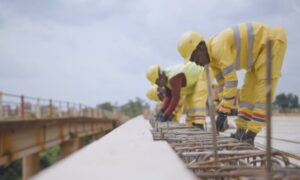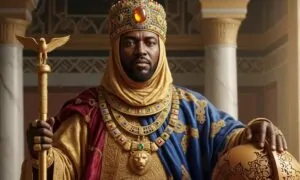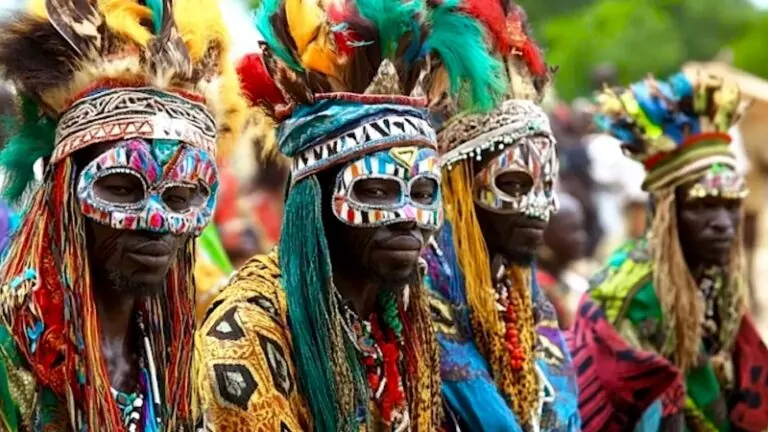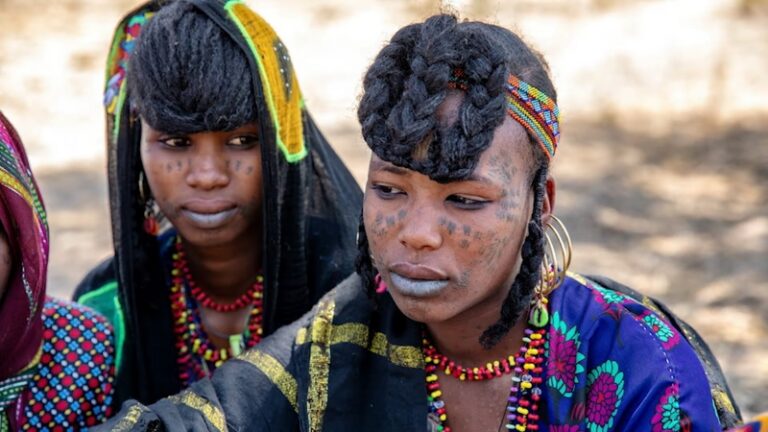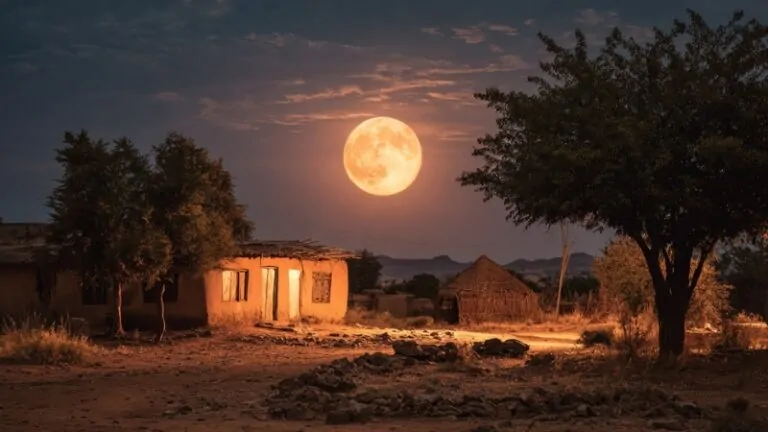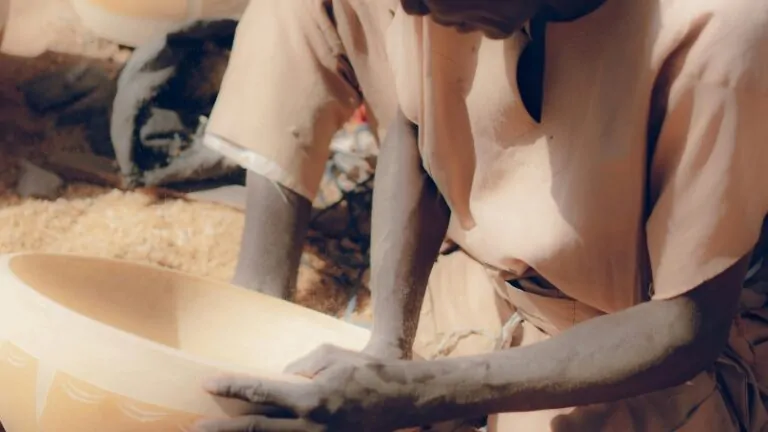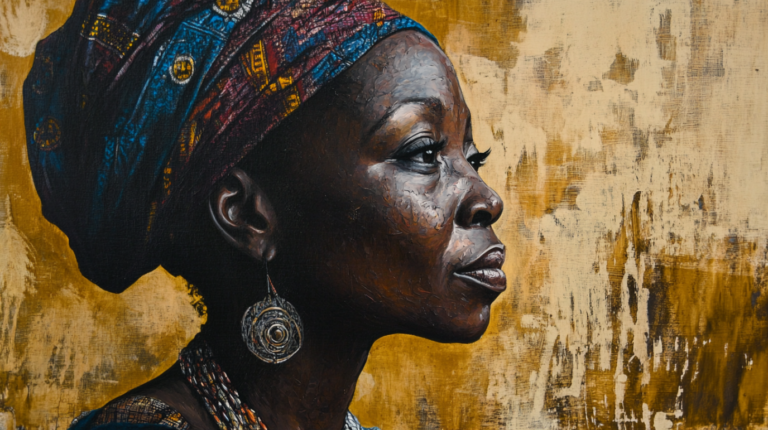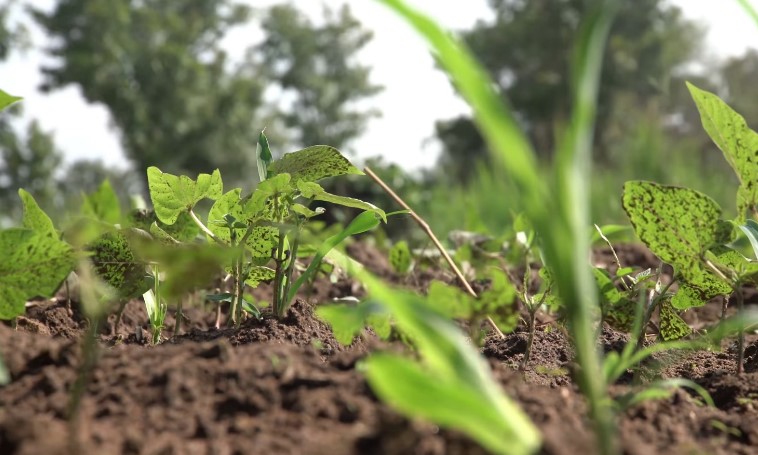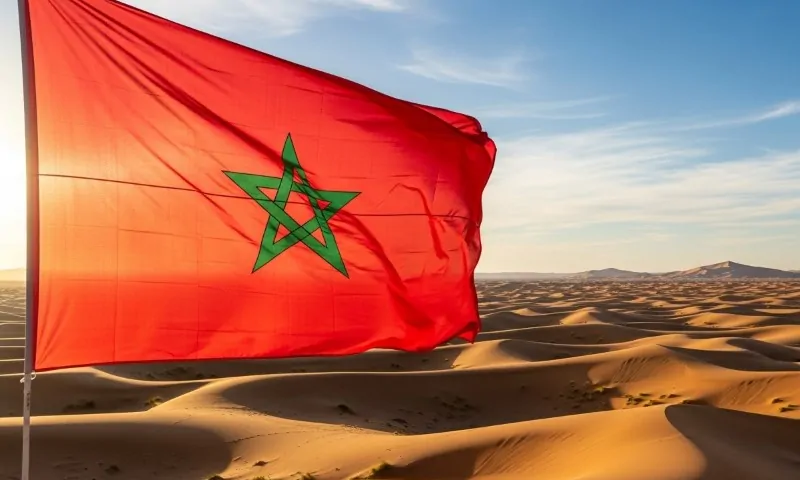
Morocco hits different. It’s North Africa’s postcard for sure, but it’s also so much more: snow-dusted peaks, a high-speed train slicing through the Atlantic plains, solar fields that could light up cities, and medinas that still hum with the sound of craftsmen at work.
Table of Contents
ToggleIf you love color, texture, and stories that linger long after your trip, Morocco has plenty. From the blue alleys of Chefchaouen to the Roman ruins of Volubilis, it’s a country where every stop feels like a page from a living history book.
Today, we prepared a guide to Morocco’s most fascinating facts, crafted for travelers, storytellers, and anyone who enjoys knowing what makes a place truly one of a kind. Let’s get straight into it.
A Quick Look
| Category | Details |
| Location | Northwestern Africa, facing Spain across the Strait of Gibraltar |
| Capital | Rabat |
| Largest City | Casablanca |
| Population (2024) | Around 38 million |
| Official Languages | Arabic and Amazigh (Tamazight) |
| Famous For | Historic medinas, mint tea, argan oil, Sahara gateways, Atlas Mountains, and film sets |
1. Africa’s Only High-Speed Train Runs Here
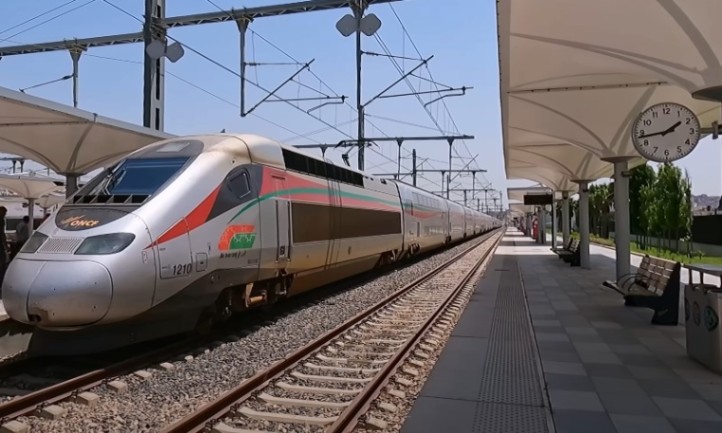
The Al Boraq line changed how people move across Morocco. It’s Africa’s first high-speed train, linking Tangier and Casablanca in just over two hours, hitting speeds up to 320 km/h on its dedicated stretch between Tangier and Kenitra.
More lines are coming. Plans are underway to extend service toward Marrakech and Agadir, bringing the southern regions closer to the coast.
Why it’s special: Smooth, scenic, and efficient. It’s about watching Morocco unfold through your window, from surf towns to olive groves.
2. The World’s Oldest Operating University Is in Fez
Long before Oxford or the Sorbonne, Fez had al-Qarawiyyin. Founded in the 9th century by Fatima al-Fihri, it’s recognized by UNESCO and Guinness as the world’s oldest continuously operating university.
Today, it still teaches religious and scientific studies inside the medieval medina, surrounded by bustling alleys and calligraphic tiles.
Fun detail: It was founded by a woman, and its library houses manuscripts over 1,000 years old.
3. Morocco Has Nine UNESCO World Heritage Sites
Nine, packed into one country. You’ve got the famous medinas of Fez and Marrakesh, the mud-brick fortress of Ait-Ben-Haddou, the Roman city of Volubilis, and more.
Why it matters: Morocco’s UNESCO sites stretch from mountains to desert, each reflecting a different era: from the ancient Roman frontier to the Silk Road caravan routes.
4. Couscous Is Officially Cultural Heritage
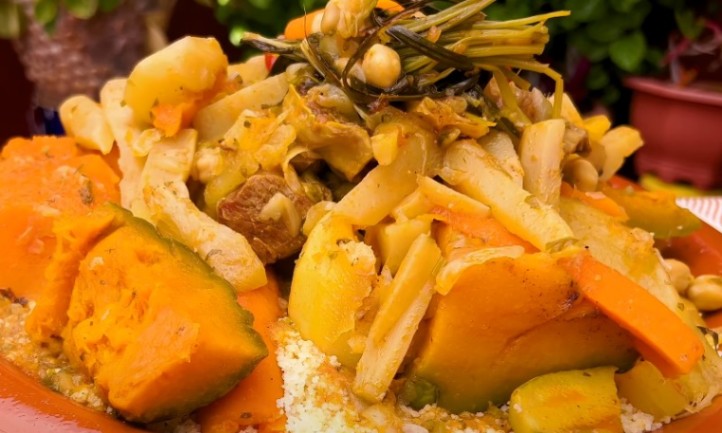
In 2020, UNESCO added couscous to its Intangible Cultural Heritage list, shared among Morocco, Algeria, Tunisia, and Mauritania.
It’s a weekly ritual. Every Friday, families gather to share the dish, serving elders first and topping it with tender vegetables and spiced broth.
Why it’s special: The heritage status honors the craft, from hand-rolling semolina to the family customs that surround it.
5. Mint Tea Is Practically a National Symbol
Sweet, fragrant, and poured from a height to create that perfect foam, Moroccan mint tea is more than refreshment. It’s how business deals start, how friends connect, and how travelers are welcomed.
Pro tip: Never rush it. The first glass is strong, the second balanced, the third pure comfort.
6. The Desert Helps Power the Nation
In the Ouarzazate region, the Noor Solar Complex spans over 3,000 hectares and generates around 580 MW of renewable energy. It’s one of the largest solar projects on Earth.
7. Ouarzazate Is Hollywood’s Desert Backlot
Speaking of film studios, Ouarzazate is where the desert meets the movies. Productions like Gladiator , Game of Thrones , and The Mummy filmed here. Atlas Studios, just outside the city, still hosts massive sets you can walk through.
Cool detail: Locals often work as extras, and many sets are left standing for visitors to explore.
8. Argan Trees Grow Only Here
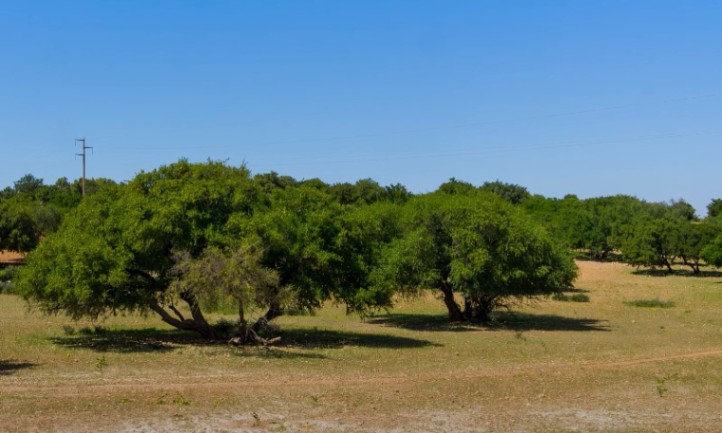
The argan tree exists naturally only in southwestern Morocco. Its nuts produce argan oil, prized worldwide for its flavor and cosmetic uses.
The Arganeraie Biosphere Reserve protects this ecosystem and supports women-led cooperatives that hand-crack the nuts and press the oil.
Why it matters: It’s a sustainable model blending ecology, tradition, and empowerment.
9. Two Languages, Two Scripts, One Identity
Arabic and Amazigh (Tamazight) share official status in Morocco. You’ll often see both on signs: Arabic script, Tifinagh, and Latin letters for French or English versions. Languages in West Africa are very different.
Why it’s interesting: A single road sign can have three alphabets, mirroring the country’s layered identity.
10. Chefchaouen Really Is That Blue
Every shade of blue imaginable paints the alleys of Chefchaouen. The tradition dates back centuries and carries religious and cultural meaning.
The result? A tranquil, camera-ready town nestled in the Rif Mountains.
Photo tip: Arrive early morning when the light hits the walls just right and the lanes are still quiet.
11. Tourism Is Back in Full Swing
By the end of 2024, Morocco had welcomed nearly 16 million visitors, the highest ever, according to Reuters . Flights, hotels, and tourism infrastructure are expanding, especially with upcoming major events.
Why it’s a big deal: The rebound means more routes, better access to smaller cities, and more immersive travel options beyond the main tourist hubs.
12. Morocco Will Host the 2030 FIFA World Cup
According to FIFA, alongside Spain and Portugal, Morocco will be a co-host of the 2030 FIFA World Cup. The event is already driving upgrades in transport, stadiums, and hospitality.
Why it’s exciting: Imagine fan zones inside Marrakesh’s medina or football chants echoing across the Atlas foothills.
13. Medinas Are Living Cities, Not Museums
The medinas of Fez, Marrakesh, Tetouan, and Essaouira aren’t just tourist attractions; people live, work, and shop in them every day.
You’ll find centuries-old workshops where artisans hammer brass, dye wool, or shape leather by hand.
14. Morocco Has Snow and the Highest Peak in North Africa
The Atlas Mountains stretch across the country, with Jbel Toubkal rising above 4,100 meters. It often sees snow from November through March.
You can ski at Oukaïmeden near Marrakesh in the morning and be on the coast by evening.
Traveler tip: Bring layers. The temperature difference between the Sahara and mountain passes can be massive.
15. Markets Are a Living Craft Encyclopedia
Souks are Morocco’s heartbeat. In Fez, the tanneries still use natural dyes and pigeon droppings to soften hides. In Marrakesh, you’ll hear the rhythmic tapping of metalworkers in the souk Semmarine.
What to buy: Brass trays, woven rugs, leather slippers, and wooden utensils.
How to buy: Bargain respectfully, smile often, and enjoy the tea you’re offered; it’s part of the dance.
16. The Currency Tells a Story
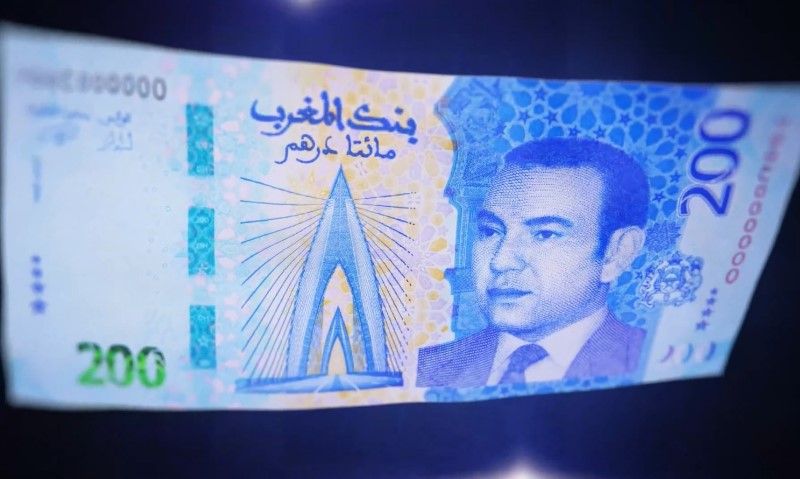
Morocco’s currency, the dirham (MAD), is designed and printed locally by Bank Al-Maghrib at Dar As-Sikkah.
The latest banknotes, introduced in 2023–2024, highlight Moroccan landmarks and symbols in intricate detail.
Why it’s fun: Every note is a mini art piece, from desert kasbahs to ocean scenes, and a souvenir in itself.
17. Roman Ruins Still Stand Strong
Near Meknes, Volubilis preserves mosaics, arches, and colonnades from Morocco’s Roman past. Olive groves surround the ruins, and you can walk freely through centuries of history.
Pro tip: Go at golden hour. The light makes the marble glow, and the hills turn gold around you.
18. Essaouira Is Where Music Meets the Sea
Essaouira’s medina blends white walls, blue shutters, and the sound of the Atlantic wind. It’s also a center of Gnawa music, a spiritual genre rooted in Sufi and sub-Saharan traditions.
Every June, the city hosts the Gnaoua and World Music Festival, filling the ramparts with hypnotic rhythms.
Traveler note: The mix of art, surf, and spirituality gives Essaouira a relaxed, creative soul.
19. Moroccan Food Feels Like a Journey Through Its History
Moroccan cuisine weaves Amazigh, Arab, Mediterranean, and Andalusian influences into dishes full of depth and color.
Regional Favorites
- Fez: Pastilla (sweet-salty pigeon pie) and almond pastries
- Marrakesh: Tangia slow-cooked in clay pots under embers
- Agadir & Essaouira: Fresh sardines grilled right by the port
And, of course, couscous, now officially heritage.
Pro tip: Don’t skip the salads. Zaalouk (eggplant and tomato dip) and taktouka (pepper relish) are everyday classics.
20. Tourism Keeps the Wheels Turning
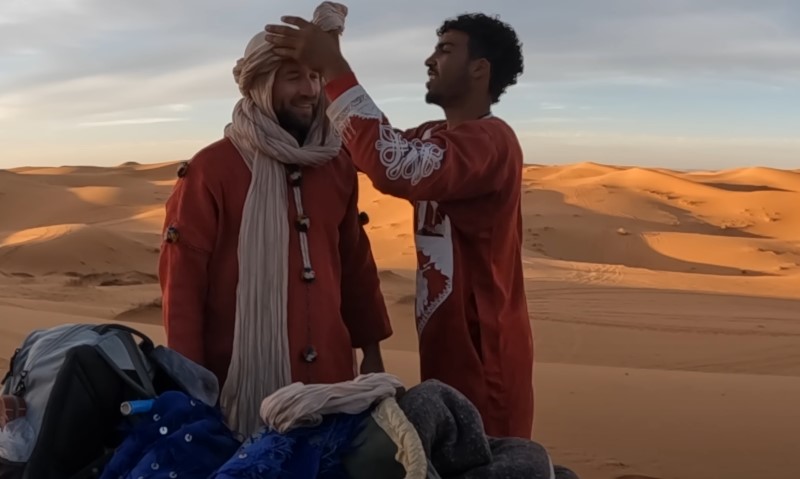
Tourism accounts for roughly 7 percent of Morocco’s GDP and provides thousands of jobs. The government’s Vision 2030 plan focuses on sustainability, regional diversification, and infrastructure.
What it means for travelers: More boutique stays in smaller towns, smoother transport options, and more responsible tourism models.
21. Big Upgrades Are Underway Before 2030
The country is preparing for a big decade. According to Reuters , airports are expanding to handle 80 million passengers, rail networks are growing, and roads are improving ahead of the Africa Cup of Nations in 2025 and the World Cup in 2030.
Practical Tips for First-Timers
| Category | Advice |
| Best Time to Visit | Spring (March–May) and Autumn (September–November) for mild weather |
| Dress Code | Modest but comfortable. Layers help with changing climates |
| Currency | Moroccan Dirham (MAD). Carry some cash for markets |
| Getting Around | Use trains for long distances, shared taxis or buses for rural areas |
| Cultural Etiquette | Always ask before taking photos of people, especially artisans or in prayer spaces |
| Tea Culture | If someone offers tea, accept — it’s genuine hospitality, not formality |
Final Thoughts
Morocco is a mix of everything that makes travel addictive: color, sound, texture, and taste. It’s ancient but forward-looking, shaped by mountains and markets, film sets and solar farms, and people whose generosity is as warm as their mint tea. While here, feel free to check interesting facts about Ghana.
You can chase its blue alleys, hike its snow-capped peaks, or simply sit in a café watching the world go by. Either way, Morocco has a way of staying with you, in your senses, your stories, and probably your spice rack.
Related Posts:
- 24 Fun Facts About Egypt You Didn’t Learn in School
- Mauritania vs Morocco - Which Country Is Better for…
- Exploring Africa Through Pictures - A Fun Learning…
- 25 Fascinating Facts About the Yoruba Tribe You Didn’t Know
- 10 Interesting Facts About Ghana You Probably Didn’t Know
- 8 Fascinating Facts About West African Culture
